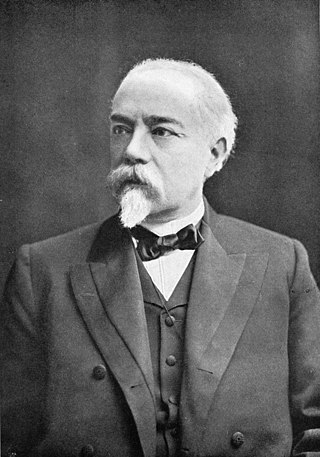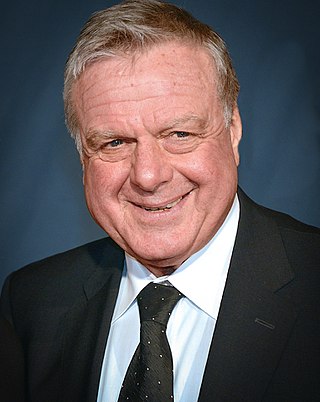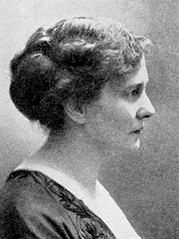
Cornelis Vreeswijk was a Dutch-born Swedish singer-songwriter and poet.
The 1922-23 season in Swedish football, starting March 1922 and ending July 1923:

Dan Andersson was a Swedish author, poet, and composer. He sometimes used the pen name Black Jim. Although he is counted among the Swedish proletarian authors, his works are not limited to that genre. His poems have been set to music by more composers than any other 20th century Swedish poet.

Olof Gustaf Hugo Lagercrantz was a Swedish writer, critic, literary scholar and publicist.

Sofia Karlsson is a Swedish folk singer.

Gabriel Jönsson was a Swedish author and poet. He is best known for his works inspired by Öresund and farming. He was one of the first members of the Scanian Academy in Sweden.
The translation of The Lord of the Rings into Swedish has been the subject of controversy. The first version, by Åke Ohlmarks, was made in 1959–1961; it was the only one available in Swedish for forty years. Tolkien took issue with Ohlmarks' translation, identifying numerous errors and inconsistencies. In 1967, in response to Ohlmarks' Swedish and Max Schuchart's Dutch translations, Tolkien produced his "Guide to the Names in The Lord of the Rings"; it discusses how to translate The Lord of the Rings' personal names and place-names, giving multiple examples from Ohlmarks' Swedish of what not to do when translating. Ohlmarks rejected all criticism, stating that he had intentionally created an interpretation of Tolkien, not a straight translation. Swedish commentators took a wider range of positions on Ohlmarks' version: some admired it, while others thought it defective.

Britt Inger Liselott "Lotta" Lotass Hagström is a Swedish writer. She holds a PhD of Comparative literature from the University of Gothenburg, and lives in Gothenburg, Sweden.

Carl David af Wirsén was a Swedish poet, literary critic and the Swedish Academy's permanent secretary 1884–1912.

Karl Gunnar Harding is a Swedish poet, novelist, essayist and translator, considered 'one of Sweden's foremost poets'. Among his other poetry collections is Starnberger See from 1977. Among his novels is Luffaren Svarta Hästen from 1977. He published the children's book Mannen och paraplyet in 1990. He was awarded the Dobloug Prize in 2011.

Sven Scholander was a Swedish musician, singer, composer and sculptor. His musical innovations led to a revival in Swedish lute playing whilst his solo performances of Carl Michael Bellman reintroduced the works in their original form.

Erik Sjöberg was a Swedish poet. He wrote under the pseudonym Vitalis.

Svarta ballader is the classically-trained Swedish folk musician Sofia Karlsson's second studio album, released in 2005. On the disc she exclusively interprets poems written by the Swedish proletarian school author Dan Andersson; five of the eleven poems are from his 1917 collection Svarta ballader. The poems are set to music by different composers, including the singers Gunnar Turesson, Gunde Johansson, and Thorstein Bergman; the musician Sven Scholander; a member of Karlsson's band, Sofie Livebrant, and Karlsson herself; while one song was set by Andersson. Karlsson and her band arranged all the songs, with novel instrumentation including cello, trumpet, bass clarinet, piano and percussion.

Visor från vinden is the Swedish singer Sofia Karlsson's third studio album as a solo artist. The album was released on 11 April 2007 by Bonnier Amigo Music Group.

Omkring tiggarn från Luossa is a poem by the Swedish proletarian author Dan Andersson. Its nine four-line verses, with a ABAB rhyming scheme, create a picture of longing for something beyond the visible world. The poem was published in his 1917 poetry collection Svarta ballader. It has become well-known through popular recordings by musicians including the Hootenanny Singers, Thorstein Bergman, and Sofia Karlsson.

Johan Börjesson was a Swedish prelate, poet, and dramatist, associated with the Swedish phosphorist and romanticist movements. He was holder of chair 3 of the Swedish Academy.

Tommy Clarence Engstrand was a Swedish sports journalist, sports commentator, and television host of general interest shows like Razzel and Zick-Zack.

Inga-Britt Margareta Fredholm was a Swedish secretary, archivist and author. She spent more than ten years serving as Evert Taube’s literary secretary, both in Sweden and abroad. She collected and edited Taube's stories for Bonniers' and contributed a total of twenty pieces of work on the national poet.

Sigrid Agneta Sofia Elmblad, born Sigrid Agneta Sofia Pettersson, was a Swedish journalist, poet, translator and writer, who translated Der Ring des Nibelungen into Swedish and produced the first Swedish translation of the song of Saint Lucy. she produced her first poems under the pseudonym Toivo. Born in Stockholm to a Swedish father and Finnish mother, she was an early member of the Nya Idun society, rising to be chair between 1918 and 1921. After working as a journalist for the newspaper Dagens Nyheter, she travelled extensively with her husband, the opera singer Johannes Elmblad. While living in Bayreuth, she developed her interest in the music of Richard Wagner, which led her to translate his works into Swedish, including Parsifal in 1917, and the work of other German composers like Robert Schumann. She also wrote fiction for adults and children, as well as biographies for figures like Jenny Lind in 1920. She died in Sweden six years later.
Major General Bengt Erik Lennart Andersson was a senior officer in the Swedish Amphibious Corps. Andersson served as head of the Naval Tactical Command (2003–2005), as Deputy Chief of Joint Operations (2007–2008), as Chief of Logistics (2008–2013) and as commanding officer of Nordic Battlegroup 08 and Nordic Battlegroup 15.


![Andersson's writing-desk in Luossa cottage [sv] Luossastugan 2.jpg](http://upload.wikimedia.org/wikipedia/commons/thumb/e/ec/Luossastugan_2.jpg/170px-Luossastugan_2.jpg)
![The poems are set in the wild Dalarna countryside. One of the places named is Kestina [sv], home of Andersson's aunt Stina. Kestina 2013a.jpg](http://upload.wikimedia.org/wikipedia/commons/thumb/f/f7/Kestina_2013a.jpg/220px-Kestina_2013a.jpg)

















